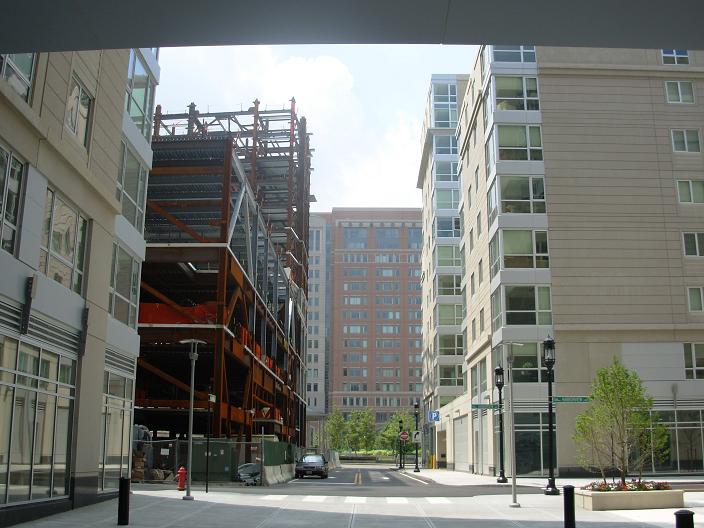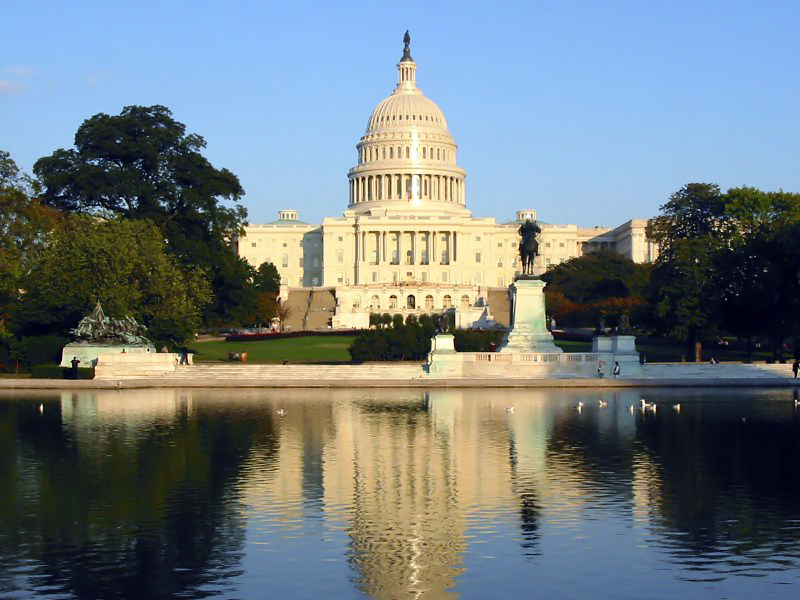Continuing to reply to briv's interesting posts:
briv said:
Justin, I agree that Brutalism does share some of the same DNA with medieval architecture, particularly the Romanesque. I think Corbu was conscious of this when he designed la Tourette -- a monastery, which is a typology traditionally tied to the Romanesque. The Brutalists, however, seemed to be uninterested in harmonizing these massive forms like the Romanesque architects did. Just look at the monotonous staccato rhythm of City Hall's "windows". If architecture is frozen music, then the upper portion of City Hall is the petrified report of machine gun fire.
So let's look at the building which symbolizes the American democracy the world over:
Oops, wrong picture... I meant this:
It's windows are just as regularly spaced as City Hall's: frozen musket fire, perhaps, with more ornate bullets? I find it a bit surprising that you're attacking the rhythm of CH's facade, which I find its strongest point. It's difficult, and misleading, to isolated the regular, 'bureaucratic' top of the building from the playful register below. Sticking to the musical metaphor, you can read the whole facade as a bar of rhythmic counterpoint: three lines of ostinato on top, a syncopated improvisation on the augmentation of the ostinato motif on the bottom:
That picture also nicely shows that the brick is a bigger problem with City Hall than the concrete: notice that it's the blank brick that walls off what is basically quite a porous building from the plaza.
With Brutalism massiveness was an ends; cacophony was a rule. Furthermore, the human scale is rarely to be found in Brutalism architecture because vast continuos concrete forms have no points of reference.
Cacophony is in the ear of the listener (and compositionally, CH is actually quite controlled). There are many things about CH you can object to, but lack of articulation isn't one of them.
I think another very important reason people react so harshly to Brutalism is the fact that the material, raw concrete, has the same gloomy color and texture as a rainy day.
Have you been to Edinburgh? Your last sentence describes it to a tee, except the material is stone, And it is beautiful, though grim, orders of magnitude more so than CH could hope to be. I for one don't subscribe to the sugar and spice school of architecture. Massiveness and drama, if brought out appropriately, can captivate even Joe Sixpack.
And now that I have the picture of the Capitol building up, let me debunk once and for all that canard that government buildings must 'express' the democratic nature of politics they shelter by being transparent, welcoming etc. What does the shape of the US Capitol express? The main element, the dome, has a consistent history as the marker of high holy places, from the Pantheon via Hagia Sophia, Qubbat us-Sakhra, St. Peter's, St. Paul's to the other Pantheon. The portico and the long flight of steps reinforce the image of a temple, where Republican and Democratic high priests intercede on our behalf with the forces of history, mainly by sacrificing our tax money. Is that the image the seat of our democracy should project? Get me the wrecking ball right now!
A parting shot: hatred of City Hall; love of red brick; phobia of any building that soars over five stories; insistence on a park every two blocks: these are among the widely held architectural tastes in Boston. Yet some of the people here who hold the first item on this list to be the unassailable justification for dynamiting City Hall are the same ones bitching when the other three get in the way of development projects. Might I be forgiven for smelling a whiff of hypocrisy?
justin









